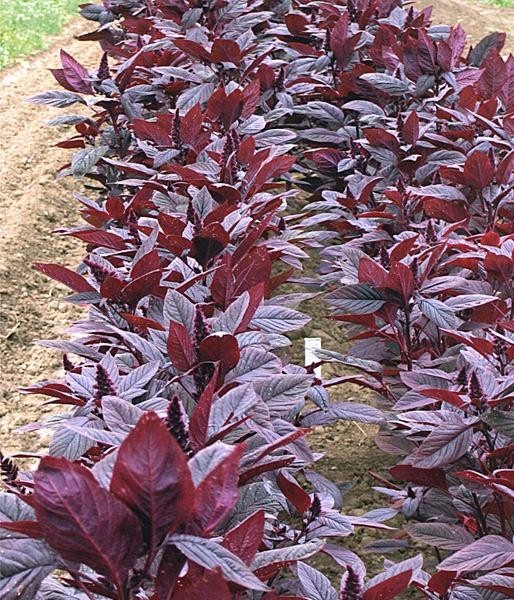
Phytoextraction of toxic elements by Amaranthus Tricolor grown on technogenically polluted soils in open ground conditions
Abstract
Using the INAA method, the ability of Amaranthus tricolor L. variety “Valentina” growing on soils with different degree of pollution to extract heavy metals was evaluated in the field experiments. It was found that amaranth of the studied variety characterized by the content of betacianin pigment, amaranthine, in the shoots and generative organ, is able to accumulate elements such as Mn, Fe and Ni from soils. The content of most of the studied elements decreases in the following order: leaves > inflorescences > stems. Under conditions of soil pollution with emissions from metallurgical plant, the phytoextraction of such elements as Mn, Fe, Co, Sb increases. The content of Fe and Mn in the leaves of A. tricolor var. “Valentina” exceeds the average data for vegetation from 7 to 17 times; the Co content exceeds the average data for vegetable from 4 to 7 times; the Sb content in the leaves exceeds the average data for vegetable from 10 to 23 times. Due to the fact that amaranth forms a sufficient biomass for the growing season, it can be recommended for phytoextraction of heavy metals from soils in case of polymetallic pollution.
Keywords
Full Text:
PDFReferences
Saet YUE, Revich BA, Yanin EP. Geohimiya okruzhayush-chej sredy. M.: Nedra; 1990. 335 p. Russian.
Gorelova SV, Gorbunov AV, Lyapunov SM, Okina OI, Fronta-syeva MV, Kozlov SA. Assessment of an industrial agglom-eration impact on soil and air pollution with toxic ele-ments (on the example of the tula city). Ecol Urban Areas. 2020;2:6–20. doi:10.24411/1816-1863-2020-12006
Prasad MN. Practical use of plants to restore metal-polluted ecosystems. Plant Physiol. 2003;50(5):764–780.
Gorelova SV, Frontasyeva MV. The use of higher plants in biomonitoring and environmental bioremediation. In An-sari AA, Gill SS, Gill R, Lanza G, Newman L. et al. Phytore-mediat. Springer International Publishing AG. 2017;5:103–155. doi:10.1007/978-3-319-52381-1_5
Kononkov PF, Gins VK, Gins MS. Amarant – perspektivnaya kul'tura XXI veka. Nauch. Izd.. Izd-vo RUDN; 1999. 296 p. Russian.
Gins MS. Biologicheski aktivnye veshchestva amaranta. Amarantin: svojstva, mekhanizmy dejstviya i prakticheskoe ispol'zovanie: Monografiya / pod red. I.I. CHernyad'eva. M.: izd-vo RUDN; 2002. 181 p. Russian.
Dolzhenko VD, Kiselev YuM. Neempiricheskoe modeliro-vanie geometrii kompleksov dvuhvalentnyh metallov (Cu, Pb, Ni, Fe) c betacianinami. Rol' fiziologo-biohimicheskih issledovanij v selekcii ovoshchnyh kul'tur: materialy Vse-rossijskoj nauchno-prakticheskoj konferencii, posvyash-chennoj 75-letiyu so dnya sozdaniya otdela fiziologii i bio-himii rastenij VNIISSOK. M.: RUDN; 2007: 115–122. Rus-sian.
Kolbas A, Mench M, Herzig R, Nehnevajova E, Bes SM. Cop-per phytoextraction tandem with oilseed production using commercial cultivars and mutant lines of sunflower. Int J Phytoremediat. 2011;13(1):149–165. doi:10.1080/15226514.2011.568536
Marchiol L, Fellet G, Perosa D, Zerbi G. Removal of trace metals by Sorghum bicolor and Helianthus annuus in a site polluted by industrial wastes: a field experience. Plant Physiol Biochem. 2007;45:379–387. doi:10.1016/j.plaphy.2007.03.018
Chinmayee MD, Mahesh B, Pradesh S, Mini I, Swapna TS. The assessment of phytoremediation potential of invasive weed Amaranthus spinosus L. Appl Biochem Biotechnol. 2012;167(6):1550–1559. doi:10.1007/s12010-012-9657-0
Shevyakova NI, Cheremisina AI, Kuznetsov V. Phytoremedi-ation potential of amaranthus hybrids: antagonism be-tween nickel and iron and chelating role of polyamines. Russ J Plant Physiol. 2011;58(4):634–642. doi:10.1134/S1021443711040145
Gorelova SV, Pescov GV, Gins MS, Kononkov PF, Frontas'eva MV, Ermakova EV, Lyapunov SM, Gorbunov AV, Okina OI. Bioakkumulyaciya himicheskih elementov netradicionny-mi ovoshchnymi kul'turami na tekhnogenno zagryaznen-noj territorii Tul'skoj oblasti. Agrohimiya. 2009;9:76–87. Russian
Toshihiro Watanabe, Yasutoshi Murata, Mitsuru Osaki. Amaranthus Tricolor Has the Potential for Phytoremedia-tion of Cadmium‐Contaminated Soils. Commun Soil Sci Plant Anal. 2009;40(19–20):3158–3169. doi:10.1080/00103620903261676
Odiyi B, Ologundudu FA, Adegbite T. Phytoremediation potential of Amaranthus hybridus L. (Caryophyllales: Ama-ranthaceae) on soil amended with brewery effluent. Braz J Biol Sci. 2019;6(13):401–411. doi:10.21472/bjbs.061308
Chirkin LA. Rentgenofluorescentnyj analiz ob"ektov okru-zhayushchej sredy: Uchebn. posobie. Vladimir: Izd-vo Vla-dimirskogo gos. un-ta; 2009. 57 p. Russian
Pavlov SS, Dmitriev AYu, Frontasyeva MV. Automation sys-tem for neutron activation analysis at the reactor IBR-2, Frank Laboratory of Neutron Physics, Joint Institute for Nu-clear Research, Dubna, Russia. J Radioanal Nucl Chem. 2016;309:27–38. doi:10.1007/s10967-016-4864-8
Frontasyeva MV. Neutron activation analysis for the Life Sciences. A review. Phys Part Nucl. 2011;42(2):332–378. doi:10.1134/S1063779611020043
GN 2.1.7. 2041-06. Predel'no dopustimye koncentracii (PDK) himicheskih veshchestv v pochve. Russian.
Predel'no-dopustimye koncentracii (PDK) himicheskih veshchestv v pochve: Gigienicheskie normativy. M.: Feder-al'nyj centr gigieny i epidemiologii Rospotrebnadzora. 2006. 15 p. Russian.
GN 2.1.7.020-94. Orientirovochno dopustimye koncentracii (ODK) tyazhelyh metallov i mysh'yaka v pochvah. (dopolnenie No. 1 k perechnyu PDK i ODK No. 6229-91). Russian.
Kabata-Pendias A., Pendias H. Trace elements in soil and plants, 3rd edition, CRC Press, Boca Raton, London, New-York, Washington, D.C. 2001. 432 p.
Skal'nyj AV. Himicheskie elementy v fiziologii i ekologii cheloveka. M.: Izdatel'skij dom «ONIKS 21 vek»: Mir. 2004. 216 p. Russian.
Mediko-biologicheskie trebovaniya i sanitarnye normy kachestva prodovol'stvennogo pitaniya i pishchevyh produktov, 1990. Russian.
DOI: https://doi.org/10.15826/chimtech.2022.9.2.S8
Copyright (c) 2022 Svetlana V. Gorelova, Murat S. Gins, Marina V. Frontasyeva

This work is licensed under a Creative Commons Attribution 4.0 International License.
Chimica Techno Acta, 2014–2025
eISSN 2411-1414
Copyright Notice







